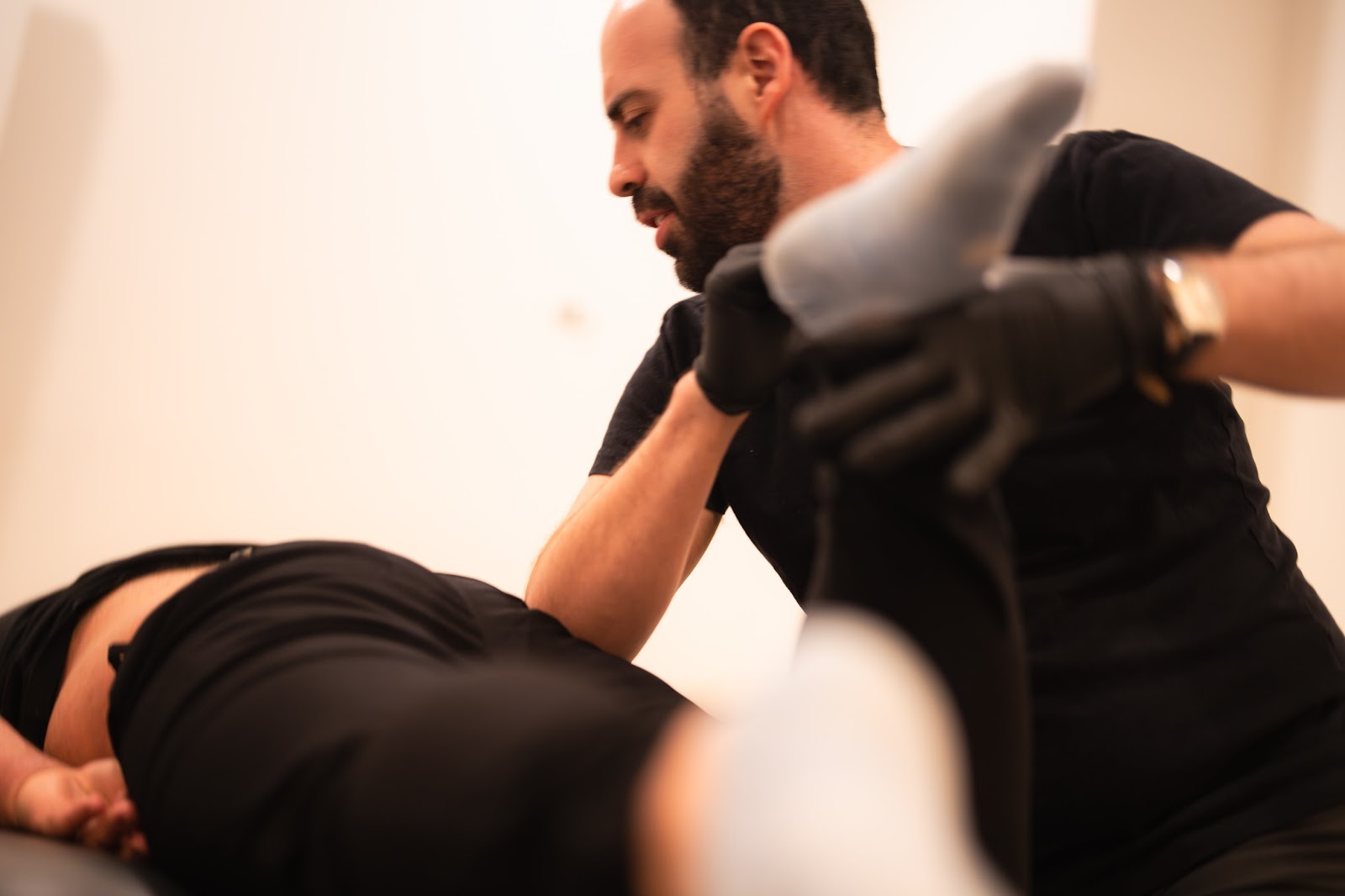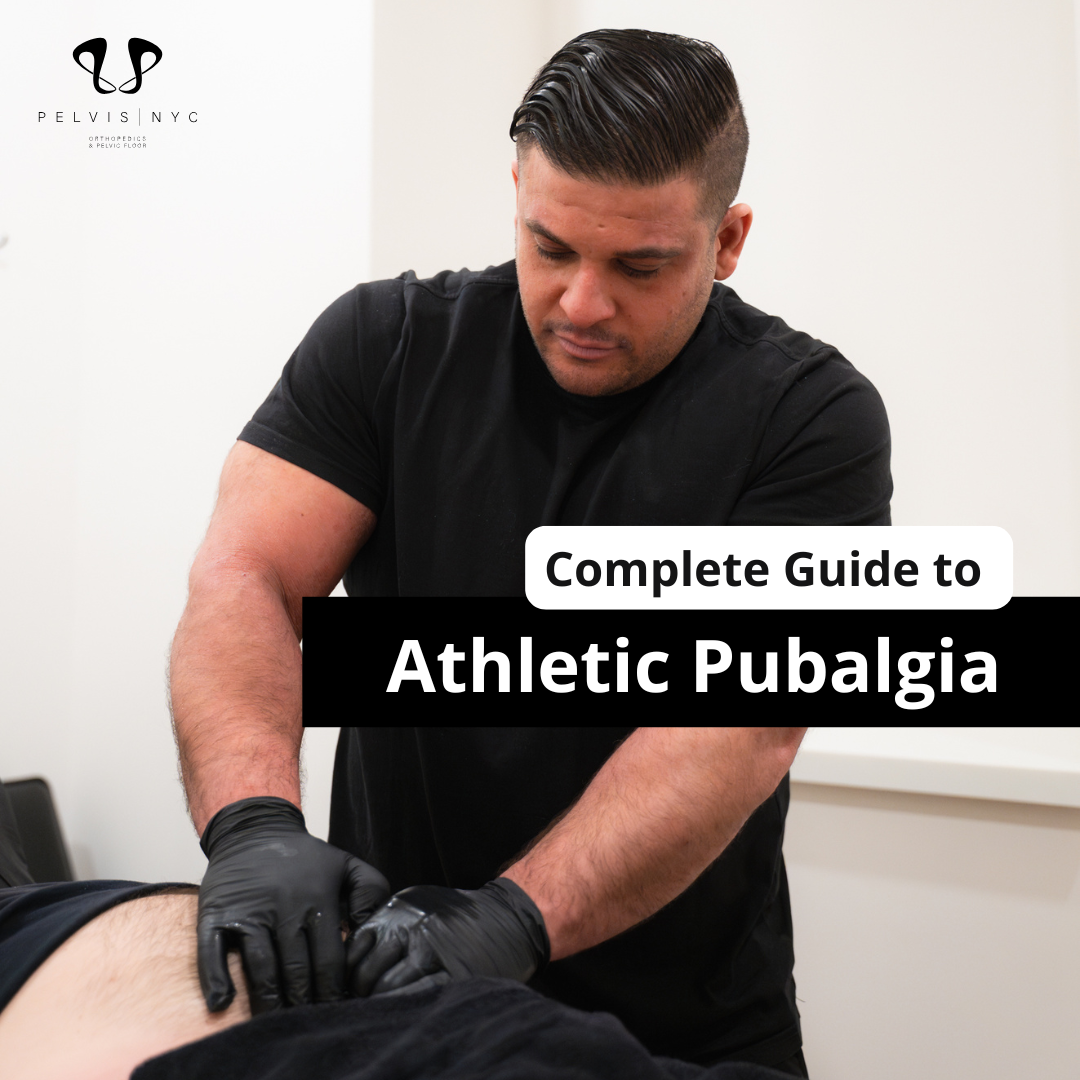I’ve seen firsthand how frustrating chronic groin pain can be—whether you’re an elite athlete or just trying to get back to weekend pickup games. Athletic pubalgia (often called a “sports hernia”) is a clinical entity with evolving diagnostic criteria and is sometimes referred to as Gilmore’s groin. This condition affects many athletes across various sports and is really a spectrum of soft-tissue injuries around the pubic bone, not a true hernia at all. The affected area is typically the lower abdomen and groin region. It pops up in both men and women, can masquerade as other conditions (like prostatitis in men or postpartum pelvic pain in women), and thrives on core weakness and compensatory movement patterns.
The good news? With the right blend of manual therapy, movement retraining, pelvic-floor work, and progressive loading, most folks get back to what they love—pain-free.
What Is Athletic Pubalgia?
Athletic pubalgia is a chronic groin-pain syndrome caused by strains or tears of muscles and tendons at their pubic attachments—most often the obliques, rectus abdominis, and adductors, including the adductor longus. The pubic symphysis acts as a pivot point between abdominal and groin muscles at these attachments. The conjoint tendon also plays a significant role in the pathophysiology of this condition.

It’s a “core muscle injury” that leads to pain with twisting, cutting, kicking, or even coughing. Athletic pubalgia is sometimes referred to as sportsman’s hernia and is considered a form of groin disruption. Inguinal pain is a common symptom and may be present alongside lower abdominal and groin pain. Pain may be reproduced during a sit up or resisted sit up, and hip extension can also exacerbate symptoms.
Core Muscle Injury — What That Really Means
It is a more accurate, all-encompassing term that explains the dysfunction at the heart of this condition:
- It occurs where deep abdominal and groin muscles anchor to the pelvis—commonly the rectus abdominis and adductor tendons.
- Over time, repetitive twisting, kicking, or sprinting stresses the core, creating small tears or imbalances that trigger chronic pain.
- This injury often coexists with adductor strains or hip pathology, making accurate diagnosis essential.
Sports Hernia/ Athletic Pubalgia: Understanding the Terminology
- Sports Hernia: The term popularized by media and patients to describe groin tissue injury without a true protruding hernia.
- Athletic Pubalgia: The preferred medical term reflecting the location (pubis) and mechanism (athletic activity).
Both labels point to the same underlying pathology—and you’ll see both used by clinicians, researchers, and sports-med resources.
How Sports Hernias Occur
Repeated rotations, high-impact stops, and muscle imbalances overload the abdominals and adductors, and these injuries often require sudden changes in direction or forceful movements. As core weakness persists, stress funnels into the pubic attachments and sports hernias occur—silent yet painful injuries. Activities that increase intra-abdominal pressure, such as coughing, sneezing, or heavy lifting, can also trigger symptoms. Sports activity and sporting activity involving repetitive twisting and turning are common causes, especially in professional athletes who are particularly at risk due to the demands of their sport.
Causes and Risk Factors
Athletic pubalgia, commonly referred to as a sports hernia, develops when the soft tissues of the lower abdominal wall and groin area—especially the abdominal muscles and adductor muscles—are subjected to excessive strain. Unlike a true hernia, there’s no visible bulge, but the pain and dysfunction are very real. The root cause is often a weakening or tearing of the abdominal wall near the inguinal canal, where the conjoined tendon and pubic bone serve as critical anchor points for muscle attachments.
Sports hernias occur most frequently in athletes who participate in sports that demand explosive movements, rapid changes in direction, and powerful twisting motions—think soccer, football, ice hockey, and tennis. These activities place repeated stress on the lower abdominal muscles and adductor group, making them vulnerable to injury. Chronic groin pain and lower abdominal pain often develop gradually, but can also be triggered by a single, forceful movement.
Certain anatomical and biomechanical factors can increase the risk. Individuals with femoroacetabular impingement, labral tears, or a history of core muscle injury are more likely to experience groin pain and develop sports hernias. The structure of the inguinal canal, the strength of the conjoined tendon, and the balance between the abdominal wall and adductor muscles all play a role in susceptibility. Understanding these risk factors is key for both prevention and early intervention, helping athletes and active individuals avoid the cycle of chronic pain and repeated groin injury.
Who Is Affected by Athletic Pubalgia?
- Male athletes: Often misdiagnosed as inguinal hernia or prostatitis because of overlapping pelvic-floor pain. A thorough review of medical history is essential for accurate diagnosis, especially since symptoms may overlap with other conditions.
- Women: Particularly postpartum or high-level athletes with underlying pelvic instability; internal pelvic-floor work is frequently indicated.
Symptoms & Diagnosis
- Pain: Dull, burning, or sharp ache in lower abdomen/groin that worsens with sprinting, twisting, sit-ups, or coughs. Patients are often experiencing pain that is chronic and worsens with activity.
- No visible bulge: Unlike an inguinal hernia, there’s often no outward protrusion.
- Diagnostic tools:
- Physical examination: A thorough physical examination is crucial, including specific maneuvers to reproduce symptoms, such as resisted adduction and abdominal tests.
- MRI: Gold standard for detecting soft-tissue tears or edema (68–98% sensitivity).
- Ultrasound: Dynamic but operator-dependent.
Core Weakness & Pathomechanics
We often see a pattern of core instability, compensatory hip movement, and chronic pelvic loading driving symptoms. When the transverse abdominis, obliques, and pelvic floor aren’t firing synchronously, stress funnels into the pubic attachments—resulting in micro-tears and pain.
Conservative (Non-Surgical) Management
- Early rest & modalities (ice, NSAIDs) for 7–10 days as part of conservative therapy, which is the first-line approach for most cases.
- Phase I (Weeks 1–2): Gentle stretching, manual soft-tissue release, hip mobility.
- Phase II (Weeks 3–6): Core-stability drills (planks, dead bugs), isometric adductor holds, pelvic-floor retraining.
- Phase III (>6 weeks): Progressive loading, plyometrics, sport-specific drills—only if pain-free.
Outcomes: Up to 80–90% return-to-sport within 3–4 months when following structured rehab. Manual therapy added to exercise speeds return by ~4–5 weeks. While conservative treatment is often effective, some cases may require surgical intervention if symptoms persist.
When Surgery Is Needed
Indications include symptom persistence after 3 months of conservative care and confirmed pubic-wall deficiency on imaging.
- Surgical procedures: Options include open repair, laparoscopic surgery (a minimally invasive surgical procedure), and pelvic floor repair techniques. Laparoscopic surgery is often compared to open surgery, with the minimally invasive approach potentially allowing for faster recovery and lower complication rates.
- Open vs laparoscopic repair: Both yield >90% return-to-sport; laparoscopic may allow return in 3–5 weeks.
- Adductor tenotomy: The adductor longus tendon is often targeted in this procedure, especially if persistent inner-thigh pain remains post-repair.
- Conjoint tendon repair: During surgical repair, the conjoint tendon is evaluated and repaired if necessary, as abnormalities or tears can contribute to groin pain.
- Surgical outcomes: Key measures include return to sport rates, symptom relief, complication rates, and overall patient satisfaction.
- Surgical rehabilitation: A structured rehabilitation program is essential after surgery to restore function and performance, particularly for athletes.
Special Focus: Women & Postpartum
Postpartum pelvic-floor weakness and ligament laxity frequently complicate athletic pubalgia in women. Integrating internal pelvic-floor therapy with core and hip work is key—and outcomes are on par with male cohorts when this holistic approach is used.

Dr. Gvili’s Integrated Rehab Model

First-line care focuses on restoring core-muscle injury through:
- Manual therapy and soft tissue release
- Core drills: planks, dead bugs, side‑planks
- Pelvic‑floor retraining
- Hip/adductor strengthening
- Neuromuscular retraining and movement pattern correction
- Sport-specific progressive loading
Studies show 65–90% of athletes improve within 4–8 weeks. ([turn0search9] [turn0search11])
Phase breakdown:
- Weeks 1–2: Rest, ice, NSAIDs
- Weeks 3–6: Core and pelvic strengthening
- Post‑week 6: Return to sport progression, when pain-free
Outcomes: Conservative care yields up to 90% return-to-sport within 3–4 months; adding manual therapy can quicken recovery by 4–5 weeks.
Prevention and Future Directions
Preventing athletic pubalgia starts with a proactive approach to strengthening and protecting the core and groin area. Regular physical therapy that targets the abdominal muscles, adductor muscles, and hip flexors is essential for building resilience and reducing the risk of sports hernias. Incorporating dynamic stretching, foam rolling, and mobility work into your daily routine can help maintain flexibility and relieve muscle tension, which in turn helps prevent chronic groin pain.
Modifying sports activities to avoid excessive strain—such as limiting sudden changes in direction or high-impact twisting movements—can also lower the risk of injury, especially for those with a history of groin pain or previous core muscle injuries. Early intervention is crucial: advances in diagnostic tools like magnetic resonance imaging (MRI) now allow for more accurate and timely identification of sports hernias, enabling targeted treatment before pain becomes chronic.
Looking ahead, research is focused on refining both surgical and non-surgical treatment options. Minimally invasive surgical procedures and innovative rehabilitation protocols are being developed to improve outcomes and speed up recovery. Personalized rehabilitation plans, tailored to the individual’s specific injury, sport, and goals, are becoming the standard of care, helping athletes return to play safely and reducing the risk of re-injury. By staying informed and proactive, athletes and clinicians can work together to prevent groin pain and ensure long-term health in the groin area.
Key Takeaways
- Athletic pubalgia isn’t a classic hernia—think soft-tissue injury around the pubis.
- Core weakness + compensatory patterns underlie most cases.
- Conservative rehab (manual therapy + core/pelvic-floor work) helps ~90% recover without surgery.
- Surgical repair is highly successful (>90% RTP) when rehab fails.
- Tailored pelvic-floor integration is essential for women and postpartum athletes.
Ready to tackle that stubborn groin pain? Dr. Adam Gvili at Pelvis NYC is here to collaborate—feel free to refer your toughest athletic pubalgia cases or reach out for a case discussion!

